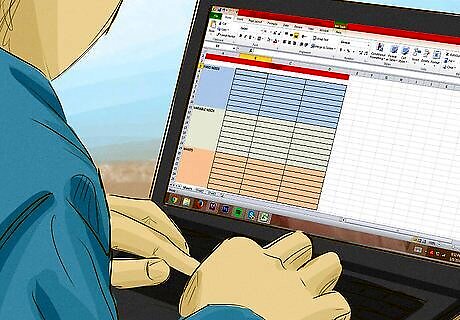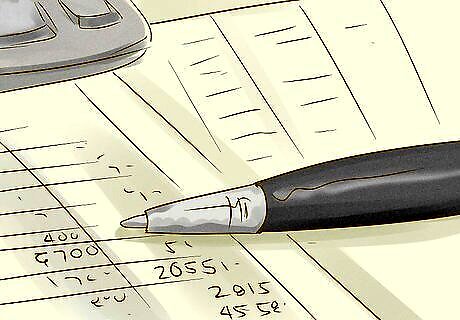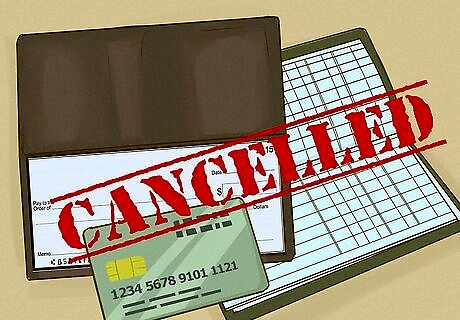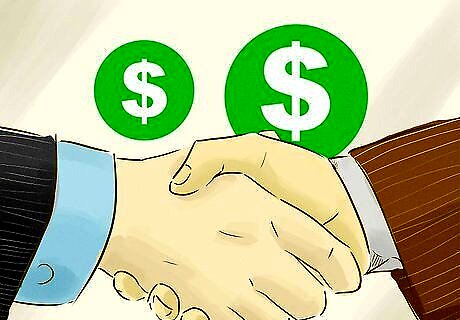
views
Bundling Home and Personal Services

Look at bundling your ongoing services. Bundling services like phone, TV, and internet can sometimes save you money, and it can definitely help simplify your bills, as you'll only be paying one bill for several services. You may be able to bundle utilities, insurance, and more. Look for providers offering deals to get you to consolidate and/or switch companies.
Ask yourself if you really need it. The problem with a bundle is you can't always pick and choose what is included, so you might end up paying for something that you don't want and will never use. Compare the price of the bundle to what you would it would cost to pay only for the features or items you want and use.
Always read the fine print. Providers often offer extremely low rates for the first month or two then hike the price significantly so be sure to analyze if switching/consolidating makes sense in the longer term. If the bundle deal only lasts for a limited time, reconsider the deal.
Consolidating Debt on Your Own

Compile a spreadsheet of all your bills. Using either Microsoft Excel or free online tools like Google Sheets, include information like your current monthly payment, the minimum monthly payment, the monthly due date, and the interest rate being charged (if applicable). This spreadsheet will help with your bill consolidation but will also be a handy reference for future budgeting! Record more information (account balances, credit limits, accounts numbers) to create an even more complete spreadsheet of your current bills. The more information you have in front of you the better.

Separate your bills by type. Now create a way to differentiate your debts by payment terms and status. The following are common types of debt that can help you categorize and prioritize your debt: Secured debt is secured by collateral, such as your mortgage loan being secured by your house. This collateral can be repossessed if you do not make your payments. You should usually pay secured debt first. Unsecured debt uses no collateral, such as many credit cards or a personal loan. These usually have a high interest rate as they are a bigger risk to the lender. Fixed interest rate debt means you pay the same interest rate for the life of the loan. Variable interest rate debt means the interest rate may vary for the life of the loan, going either up or down. Fixed repayment term means the debt must be paid within a certain time period or by a predetermined date. Variable repayment term means there is no predetermined end date by which you must pay back the loan. A deductible loan, such as a mortgage or student loan, has some tax benefits. A deductible loan, such as a credit card, has no tax benefits attached.

Rank the unsecured bills by APR. Gain some immediate insight into your current financial situation by looking at which debts/bills are charging you the highest annual percentage rate (APR). APR is a combination of your interest rate as well as any additional costs or fees. These will be the first priority to consolidate and/or pay off since they are costing you the most money. Prioritize your payments. Now that you can see which debts are costing you the most, focus on putting any extra money into those debts first. Anything above the minimum payment on a debt will help to pay down the debt faster, but note that you'll need to keep paying at least the minimum on all your bills to avoid costly late fees.

Consider a balance transfer. You may be able to transfer your high interest rate account balances over to lower (or zero) interest rate credit accounts. This process is called a balance transfer. Balance transfers are usually limited by your current credit rating; it can difficult to qualify for the lower-rate credit card offering the balance transfer. In addition, balance transfer terms may contain harsher penalties. One late payment may be enough to rescind the original interest rate and raise it to one higher than what you were paying before you executed the transfer. Lastly, balance transfers typically charge a percentage fee on each transaction and these fees will add to your total cost. For more detailed information on balance transfers, read How to Apply for a Credit Card Balance Transfer and How to Find Credit Card Balance Transfer Offers. One risk here is that you'll transfer the account balance, then run the original debt back up, effectively doubling the debt. Avoid this by closing the original debt account. Watch for offers from your bank or other banks guaranteeing a specified time frame in which you won’t be assessed an interest rate on new balance transfers. The upside to a balance transfer is that you'll only need to make one monthly payment, as opposed to several. Also, if you can consolidate your debts to the lowest interest rate available, you'll save yourself money on interest expenses.

Set up a payment plan. Use your spreadsheet and your priority list to make a plan and follow it. Setting up automatic payments or other reminders is a great way to avoid being late and incurring more fees. It also simplifies your life and is one less thing to remember.

Consider closing unnecessary accounts. If your account balance is zero you may want to close those accounts; however, keep in mind that canceling a credit card can negatively affect your credit score. If you don't think you'll be too tempted to use the card in the future, go ahead and keep the account open and just don't use it. Don't just consolidate—also look at the source of the debt. If you're spending above your means, you need to address that as well, or else your debt will continue to grow.
Getting Outside Help with Consolidation

Connect with a credit counseling service. If you're feeling like you need outside help, don't worry, you're not alone! Credit counseling agencies are non-profit organizations that specialize in helping people find the best solution for their specific situation. The process generally begins with free credit counseling which will help you better understand your current credit position and your options going forward. This is strongly recommended before applying for a new bill consolidation loan. You'll gain the information you need and be empowered to make the right decisions going forward. For more detailed information, check out How to Choose a Debt Management Program. Debt consolidation isn't the same as debt settlement—when you consolidate debt, you're just moving it all to the same place so you only have one payment. A debt settlement means you're reaching out to your lenders telling them you can't make your payments and you need to come to an arrangement. That can have a negative impact on your credit score that can last for years.

Consider a bank loan. Depending on your situation, applying for a (new) debt consolidation loan from your bank may be the best choice. A new loan has the potential benefit of paying off several bills simultaneously, giving you a new interest rate (hopefully a lower one), and in the process consolidating your bill payments to a single creditor (the bank). Exercise caution however because a new loan also has the potential increase your total costs and sink you deeper into debt with higher rates or more demanding terms than you had before. While a new loan may simplify your payments through consolidation, it will almost certainly increase your total payback time. Again, make sure to close the original debt account after transferring. Otherwise, you may end up simply running up the same amount of debt again. Your debt counselor or your local bank can help you with the application process.

Look into loan forgiveness. For students loans, partial forgiveness of the debt can be an option for those who qualify. Several programs exist for student loan forgiveness based on your occupation and volunteer service records. Your debt counselor should be able to advise you, or else look at How to Get Student Loans Forgiven for more information.

Set up a payment plan. As with any consolidation plan you will need to make a payment plan and stick to it. Work with your debt counselor or loan officer to calculate how much you will be realistically able to pay, then set reminders for yourself to always pay on time. Autopay options can greatly reduce the amount of time you spend each month paying bills, and reduce the likelihood of a late payment. Whenever possible, pay more than the minimum to reduce your debt balance.




















Comments
0 comment